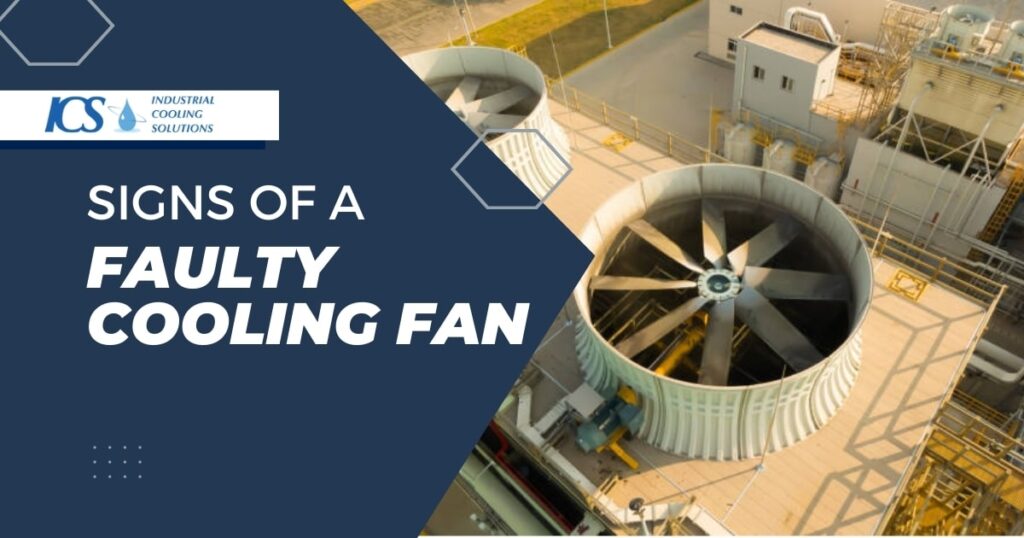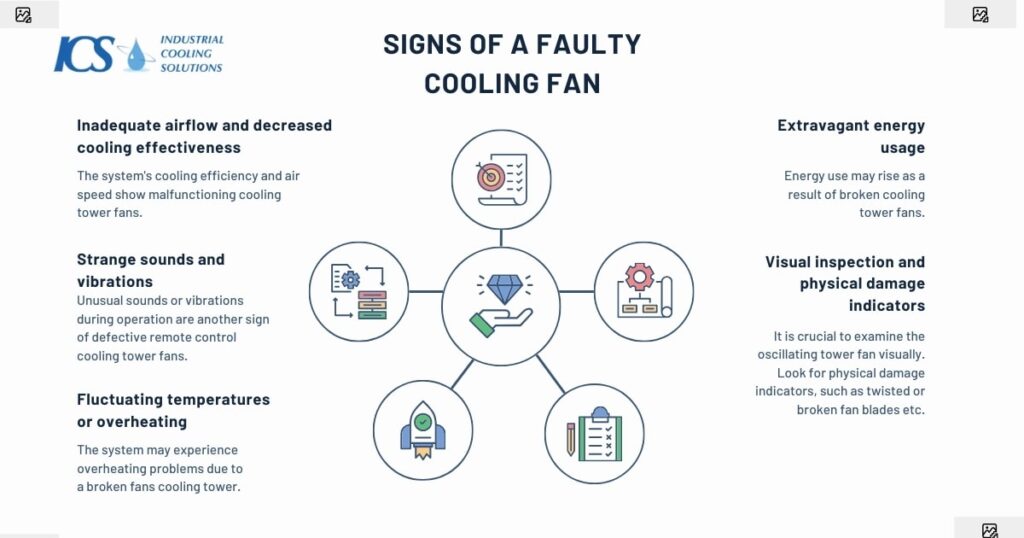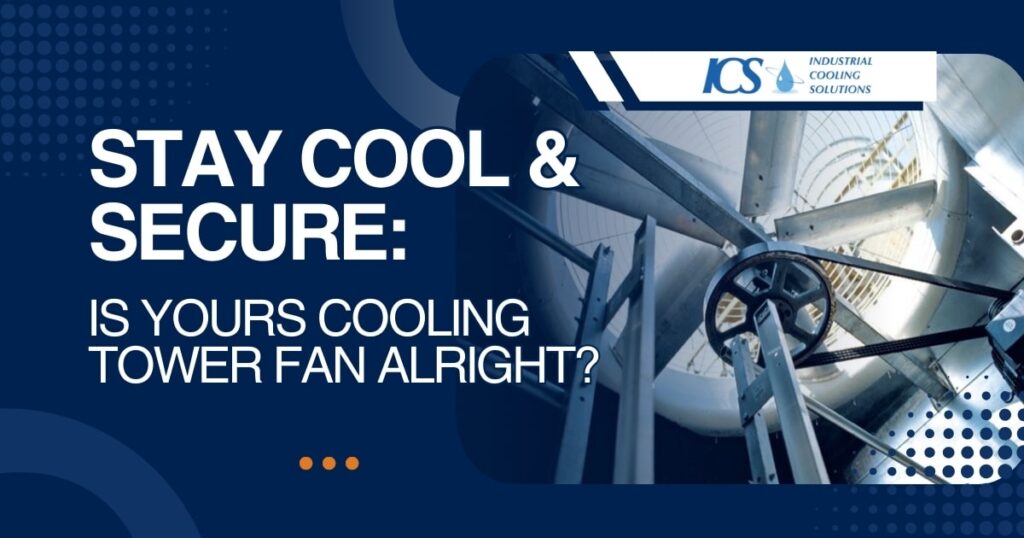In today’s post, we here at Industrial Cooling Solutions Inc. wanted to go over an important subject—when is it time to replace the fan blades in your industrial best tower fans cooling tower?
These tower fans cooling tower play a major role in eliminating heat, and it is important that you, as the operator, know when it is the right time to retire one fan and replace it with another. Keep reading below to learn more.
Table of Contents (Cooling Tower Fan )
Understanding Cooling Tower Fans

The cooling process is greatly aided by remote control cooling tower fans, which are crucial for cooling tower systems. Their main job is to rotate cool air and transfer heat from the water inside the tower to the surroundings easier. The fans cooling tower provides effective cooling and convenient remote control air purifiers and the optimum flowing water temperature by generating a constant flow of cool air.
Maintaining the best cooling tower fan performance requires routine maintenance. Tower fans cooling tower may gather dust, dirt, or mineral deposits over time, reducing their effectiveness and airflow.
Signs of a Faulty Cooling Fan

Maintaining the effectiveness and functioning of your cooling system depends heavily on the cooling tower fan. It ensures your equipment runs smoothly by assisting with gentle air circulation and heat dissipation.

However, fans cooling tower might have problems influencing their performance like any mechanical part. Understanding the symptoms of a failing oscillating tower fan is essential for avoiding expensive failures and ensuring the lifespan of your cooling tower. Read further for the following warning signs:
Inadequate airflow and decreased cooling effectiveness:
The system’s cooling efficiency and air speed show malfunctioning cooling tower fans. If you observe that the cooling capacity is not operating at the required levels or that the air speeds from the tower are weaker than usual, there might be a problem with the fan.
Strange sounds and vibrations:
Unusual sounds or vibrations during operation are another sign of defective remote control cooling tower fans. These sounds of tower fans might be loud, erratic vibrations, or rattling or grinding. Such fan noises and vibrations may indicate a motor problem, broken or loose fan blades, or misalignment.
Fluctuating temperatures or overheating:
The system may experience overheating problems due to a broken fans cooling tower. It may indicate that the cooling fan is not properly circulating the air to provide proper cooling if you find that the temperature levels in the tower are regularly higher than usual or if you detect temperature variations.
Extravagant energy usage:
Energy use may rise as a result of broken cooling tower fans. If there is a sudden boost in energy demand with no other explanation, the fan may not be working as accurately as it should. This increased energy use may result in greater electricity costs and less effective cooling.
Visual inspection and physical damage indicators:
It is crucial to examine the oscillating tower fan visually. Look for physical damage indicators, such as twisted or broken fan blades, loose connections, or wear-and-tear indications. Visual clues can offer insightful information about the state of the fan and assist in spotting possible problems.
Troubleshooting and Maintenance Tips for cooling tower

Proactive troubleshooting and routine maintenance are crucial for preserving the functionality and durability of your best tower fan. You may solve common fans problems by becoming familiar with a few straightforward troubleshooting methods and implementing efficient maintenance procedures.
So let’s learn how to effectively troubleshoot and control your oscillating tower fan to guarantee that it operates at its peak efficiency.
Simple methods for troubleshooting typical cooling tower fan issues:
There are straightforward troubleshooting procedures you may use when dealing with typical oscillating tower fan issues before enlisting expert help. Inspecting fan electrical connections, verifying appropriate alignment and balance of the fan, checking for loose or broken fan belts, and removing any dirt or obstructions from the area around the fan are a few examples.
You can fix simple difficulties and get the fan working again by taking care of these frequent problems.
Routine maintenance, such as belt replacement and lubrication:
The best functioning of your oscillating tower fan depends on routine maintenance. This also entails routinely lubricating the motor and fan bearings to lessen friction and increase longevity.
Fan belts must be regularly inspected and promptly replaced to avoid belt slippage and preserve correct functioning. pickup the fan routine maintenance in your maintenance program; it may maximize your cooling tower fan’s effectiveness and lifespan.
Cleaning and buildup prevention advice for the fan system:

For the oscillating tower fan system to remain effective, debris collection must be avoided. Clean the fan housing and blades often to eliminate dirt, abnormal fan speeds, dust, or debris obstructing airflow.
Pick up the proper cleaning equipment and methods to prevent harming the fan components. To further reduce the chance of clogging and potential damage, consider installing safety screens or filters to stop big debris from entering the fan system.
Options for expert maintenance and repairs:
While many fans cooling tower problems may be resolved with straightforward troubleshooting and routine maintenance, it is essential to have access to expert maintenance and repair solutions. Professional technicians have the knowledge and specialized equipment to identify and fix complicated issues quickly.
They may conduct thorough examinations, make sophisticated repairs, and offer maintenance services designed for your cooling tower fan system. Pickup the experienced fan knowledge, that guarantees your oscillating tower fan to gets the maintenance and care it needs to perform at its peak.
Wrapping Up:
In conclusion, monitoring the condition of your energy-efficient, personal tower fans is essential for preserving your cooling system’s efficacy and efficiency. You can ensure your cooling tower fan stays in top shape by being aware of the features, speeds & symptoms of a failing slim profile cooling tower fans, abnormal fan speeds, comprehending its function in the cooling rotate process, and putting regular maintenance procedures into practice.
So, take the necessary actions to manage or control your cooling tower fan running smoothly and profit from a cooling system in good working order. Keep cool and use your remote control cooling tower fans in a comfortable approach easily.
The sleek design of our cooling tower fan brings a refreshing breeze to any room. With a convenient remote control and LED display, adjusting settings is effortless. Whether it’s for your home office or bedroom, our tower fans from ICS offer superior cooling performance and style.

